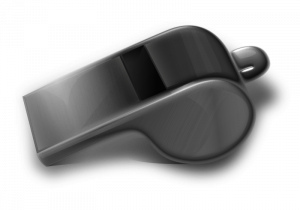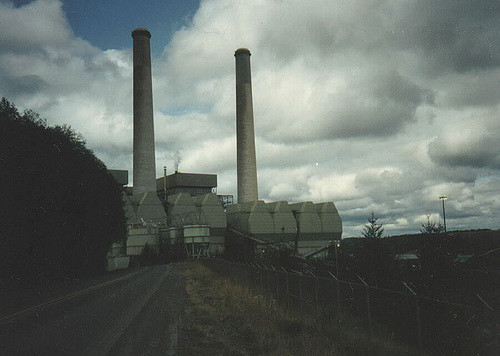
President Trump’s candidate for Secretary of Education, Betsy DeVos, was approved today by the Senate committee that conducted her hearing. During her hearing, a question was asked of Mrs. DeVos by Sen. Sheldon Whitehouse (D-RI) about whether or not she would work to keep “junk science” (such as “Intelligent Design” or efforts to erode climate science) out of the public school classroom. Rather than a simple “Yes,” she replied that she would support “especially science that is, uh, that allows student to exercise critical thinking…” [1]
This sounds innocuous, and even supportive, but in the long fight to keep anti-science forces from degrading US science education efforts, “critical thinking” has been appropriated by anti-science forces in public education conversations to mean “promote non-scientific views in the science classroom about established scientific frameworks.” Let’s explore this a little to understand it better.
Real critical thinking is a good thing. As a process, it’s not taught well enough in public schools, though many teachers and school systems have worked hard over many decades to change this. Change is, nonetheless, slow. So, what is “critical thinking”?
Critical thinking is very complicated to define, and a clearer and more nuanced understanding of what it means to conduct this process has evolved over time as humans have encountered new problems and new difficulties in problem-solving and thinking about the world. A complex set of definitions is available in Ref. [2]. Of all definitions collected in this reference, I think this one compactly hits on the key ideas:
Critical thinking is the intellectually disciplined process of actively and skillfully conceptualizing, applying, analyzing, synthesizing, and/or evaluating
information gathered from or generated by: observation, experience, reflection, reasoning, or communication, as a guide to belief and action. [3]
Critical thinking demands skepticism: the idea that not all claims are immediately accepted or rejected except by considering the weight of the most reliable evidence. A good skeptic ultimately does come to a conclusion and makes a decision. They don’t sit on a claim forever.
The opposite of skepticism is “denialism” – this is the refusal to accept or reject a claim based on the weight of the most reliable evidence. Denialist work endless to avoid making a decision at all, or avoid making a decision consistent with the weight of the actual reliable evidence. Denialism and skepticism are often mistaken for one another in popular media or discourse, but they are distinct practices. One is consistent with critical thinking, while the other rejects it.
So why is “critical thinking” in the context of science education a “dog whistle” to the forces of anti-science – a code phrase that doesn’t mean what you might believe it to? Because science is already a method of gathering evidence founded on critical thinking. The scientific method is the process of observation of a phenomenon; proposal of a testable, falsifiable explanation for the phenomenon; test of the explanatory mechanism; assessment of the results of the test, determining if the explanation is falsified or if the explanation survives the test to be tested another day; dissemination of results to the public to facilitate the expansion of knowledge and criticism of the work. As you can see, comparing the scientific method to the definition of “critical thinking” above, there is a huge overlap in their content.
So when someone in the sphere of discourse on public science education emphasizes that we need “more science that promotes critical thinking,” this is not only a misunderstanding of science (it already IS a form of critical thinking, one intended to establish reliable explanations for natural phenomena), it hides their real motive: introduce counter-scientific ideas or weak sense thinking that is intended to cast doubt on established scientific fact. There is likely an attempt to deny the weight of the most reliable evidence, often done to preserve a world view in the face of a huge counterweight of such evidence.
For instance, let us consider the teaching of biology in public schools. Natural selection as the mechanism for explanation evolution (the diversity and relatedness of life on earth) has been established as the founding, unifying idea of biology since the early 1900s. However, people who cannot separate scientific from religious thinking can often have a hard time accepting this fact because they feel it runs counter to specific religious teachings or religious interpretations about humans and their place in the world. So, to preserve a world view, they offer religious frameworks that sound “sciency” but don’t play by the actual rules of either critical thinking or the scientific method. One of these is “scientific creationism” (it’s not actually conducted scientifically) and another, the successor to that idea, is “intelligent design.” Such frameworks are based on specific (fundamentalist Christian) religious ideas and avoid all the normal mechanisms of scientific inquiry to prevent being disproven or critically appraised.
So next time you hear about someone advocating for “more science that includes critical thinking”:
- Remind yourself that science already is critical thinking; at best, this is a redundant statement and at worst indicates a total misunderstanding or misrepresentation of science.
- Ask yourself, “What are the motives of the person?” Are they an advocate for more religious practice in public school? Are they an advocate for weakening public schools in favor of other kinds of schools? Are they a promoter of ways of thinking that are not scientific, such as “intelligent design” or efforts to misrepresent the state and conclusions of climate science?
If you learn to spot such “dog whistles” in public discourse about science education, you’ll be better at spotting people who sound like they mean well but who are prepared to try to sneak around science to introduce, into American public education, something that is really dressed-up religion or personal belief acting apart from actual science or actual critical thinking.
[3] Michael Scriven and Richard Paul. (2003). Defining Critical Thinking. http://www. criticalthinking.org/University/univclass/Defining.html



